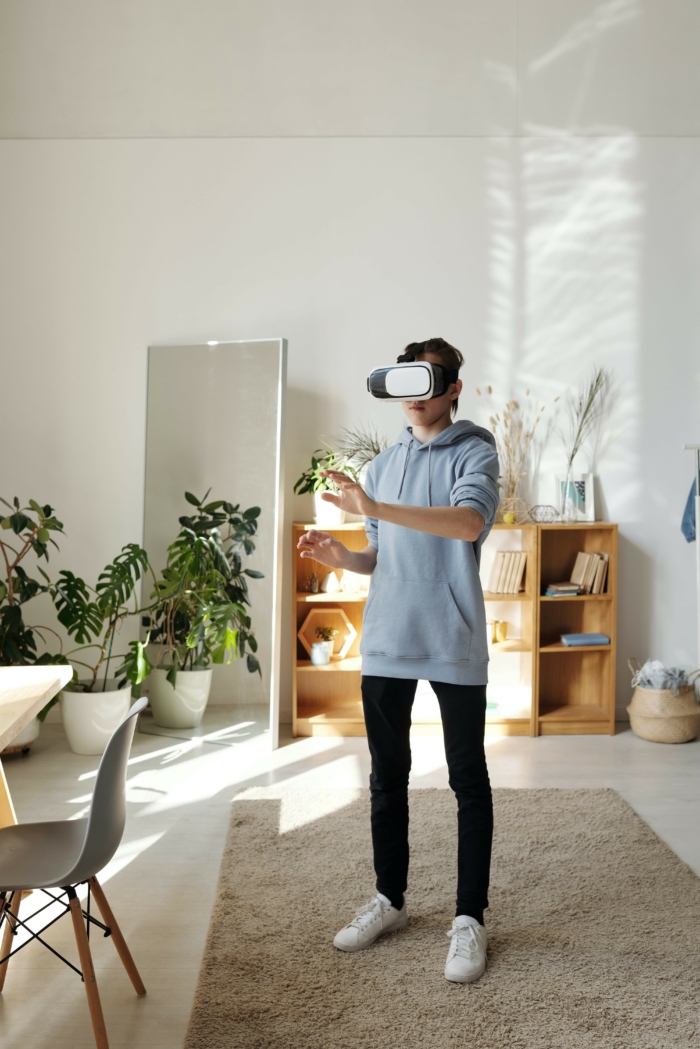November 22, 2023

According to D. Hardawar, Senior Editor at Engadget, the VR headset market has begun to mature. So, if you’ve been holding out to buy a headset, you chose wisely. Headsets have come a long way since the launch of the Oculus Rift and HTC Vive six years ago.
The Meta Quest 3 has just come out, and it’s the best standalone headset we’ve ever seen. And if you’re looking for a more immersive experience, high-end PC headsets are getting cheaper and the PS VR2 is a solid option for console gamers. The VR market is in a state of flux as we await Apple’s Vision Pro, but if you’re still hankering for some virtual action, we’ve collected some of the best options that we’ve tested and reviewed below.
So, what makes a good VR headset?
Hardawar tends to judge them on a few basic criteria: Ergonomics, immersion and controls. It’s not that hard to shove a mobile display into a plastic headset and strap some cheap elastic headbands onto it. But it takes skill to craft something that’s well balanced and doesn’t feel uncomfortable after 30 minutes.
Immersion, meanwhile, comes from having high resolution screens with fast refresh rates, so everything looks sharp and smooth. Field of view is also a major element, as it describes how well VR screens can cover what you see. Having a narrow field of view makes it feel like you’re looking through a pair of binoculars, and limits your sense of “presence.” But a wide field of view can make it seem like you’re actually flying over the globe in Google Earth.
And when it comes to controllers, the best options fit naturally in your hands and offer accurate tracking. The industry has basically adopted the design of Meta’s excellent touch controllers, but we’re also seeing intriguing leaps forward like Valve’s finger tracking gamepads.
Best VR headset for most people – Meta Quest 3
The long-awaited follow-up to the Quest 2 is an upgrade in every respect: It’s more comfortable to wear, it has higher quality screens and it has full-color mixed reality cameras, allowing you to see the real world alongside virtual elements. While it’s more expensive at $500, it’s also a far more capable headset than the Quest 2, with hardware and optics that will keep you happily immersed in VR for years.
The Quest 3 is powered by Qualcomm’s Snapdragon XR2 Gen 2 chip, which Meta says has double the graphics power of the Quest 2. That additional power is noticeable in games like Red Matter 2, which feature updated textures that deliver an experience closer to PC VR. The Quest 3’s new displays run at 2,064 by 2,208 pixels per eye, offering an even better experience than the PlayStation VR2. Its mixed reality cameras also let you easily see the real world, in case you need to quickly answer a text or Slack message. And they enable games that can be built around your room.
Best cheap VR headset – Meta Quest 2
Over years since its release, the Meta Quest 2 remains the best budget VR option for the vast majority of consumers. It’s completely cordless, and it’s comfortable to wear for long sessions. And now that it’s back down to its $299 launch price, it remains the best way to jump into VR without spending a ton of money.
Here’s what’s still good, though: there’s a huge library of titles that you can experience anywhere, and it’s bundled with Meta’s great motion controllers. You can also connect the Quest 2 to a gaming PC to stream more complex VR experiences.
Best console VR headset – Play Station VR2
The PS VR2 is one of the best headset we’ve tested. It offers dual 2K OLED HDR screens, effectively giving you 4K quality. It’s one of the most comfortable headsets around. And it has some genuinely refreshing new features, like eye tracking and headset haptics. (Yes, it can literally rock your noggin.) Best of all, the PS VR2 delivers high-quality virtual reality without the need for a $1,000+ gaming PC – all you need is a PlayStation 5.
Best PC VR headset under $600 – HP Reverb G2
If you don’t care about wireless VR, and you want to invest a bit more in a high-quality PC headset, HP’s $599 Reverb G2 is meant for you. It was developed in cooperation with Valve and has some of the best features from the pricier Index headset, like near-field speakers. The Reverb G2 also has sharp screens, offering 2,160 by 2,160 pixels per eye, a 90Hz refresh rate, and a relatively wide 114-degree field of view.
Best PC VR headset for gamers – Valve Index VR kit
Valve’s Index kit remains one of the best high-end VR solutions on the market. For $999 you get the Index headset, Valve’s finger tracking controllers and two SteamVR base stations. While we’ve seen higher-resolution headsets arrive in the last two years, it’s still a very solid option, with a 1,440 by 1,600 pixel resolution, an eye-watering 144Hz refresh rate and a massive 130-degree field of view. I’d gladly lose a few pixels for the Index’s smoother and more expansive screen, which are still far beyond most other consumer headsets.
Best VR quality, no matter the cost – BigScreen Beyond
Essentially an upgrade for the Index, the Beyond is a unique spin on a VR headset from Bigscreen, the developer of a popular app for watching video in VR. It looks more like an oversized pair of goggles than a massive VR headset. The $999 Beyond is the lightest VR option we’ve ever seen (it weighs a tad more than a deck of playing cards), and its Micro-OLED screens are sharp and offer near-perfect contrast. Unlike LCD screens, black can look genuinely black with the Beyond.

